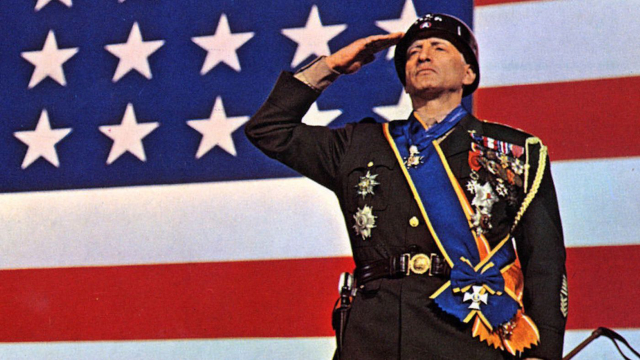
War movies have a long, powerful history in Hollywood. Ever since D.W. Griffith’s Birth of a Nation portrayed the Civil War in 1915, there have been many masterpieces of cinema involving the genre. There is a deep sense of patriotism, empathy, and excitement that comes with watching dramatized military battle. Especially as an American, to see our soldiers up on the big screen dying for American ideals and freedoms really stirs the soul.
The United States has had many military conflicts in her history. Starting of with the American Revolution in the late 1800s right up to the modern War on Terror. Coinciding with that history, Hollywood has created some wonderful films set during, and about those conflicts. There are too many films to honor when you add them all up. However, this list involves those movies that are the best representatives as a history lesson. They focus on the battle, the warfare, and the strategies. Watching these films gives the audience a sense of what the conflict was like. Here are the best films representing each American war theater.
The American Revolution
The Patriot (2000)
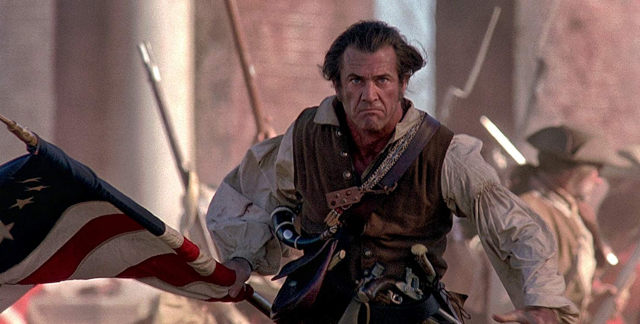
Sure, it is a bit odd to have one of our best Revolutionary War films made by a German director. However, Roland Emmerich’s The Patriot is a superb film. The premise is not unlike Ridley Scott’s Gladiator where a father seeks revenge for the death of his son. Though, this film really does accentuate the value and effectiveness of the American Militia as well as the regular soldiers. The film is rated R, which is a huge benefit, because cannonballs ripping off limbs and bayonets skewering Redcoats is not PG-13 fare. Mel Gibson’s Benjamin Martin is a man with revenge on the mind, but the film’s themes of duty and patriotism never get lost.
The film just hits the right notes. Gibson’s performance is one of his finest. Jason Isaac’s villain oozes filth and evil. The effects, sound, and action are superb. And finally, John William’s phenomenal score will have you wanting to stand up with your hand over your heart.
The Civil War
Glory (1989)
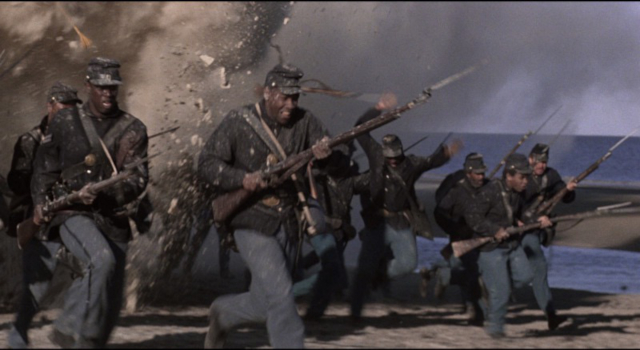
The Civil War was the bloodiest conflict the United States ever suffered. Logically, that makes sense since it was American vs. American. No other Civil War film more accurately exhibits what the conflict was like or why it was being fought like 1989’s Glory. Directed by Edward Zwick, the film tells the story of the first all-black regiment, the 54th Massachusetts. The brilliance of the film is the nuance of how these black soldiers were treated and respected. This isn’t simply the righteous North versus the racist South. The Northern officers and soldiers still have a deep seeded prejudice toward these black soldiers. Also, the soldiers can always feel the way the rest of the Union Army sees them as inferior.
It is a beautiful film that really underlines the ugliness of the Civil War. Also, what better way then to get the sense of what the war was about then to see the African-American soldiers fighting for themselves. Matthew Broderick may be a BIT too young to play Colonel Robert Shaw, but he does a fine job. However, the real star is Denzel Washington, and he earned his first Oscar for his efforts. He is a man that is so cynical about the White man but he will use the White Man’s war to get a little bit of vengeance and freedom for himself.
World War I
War Horse (2011)

War Horse is certainly focused on Joey for the entire film, but it is Joey who moves through the European Theater of WWI like a equine Forrest Gump. He starts off as a British Officer’s mount. Then as a pet for a countryside girl. However, Joey eventually makes his way to the German side and is used pulling artillery. The film shows the glories and the horrors of war in astonishing depth and detail.
No Man’s Land is one of the most horrible infamous war concepts that has ever arisen. That barren, barb-wired wasteland between the opposing front’s trenches is a thing of nightmares. When Joey makes his way to the battlefield and gets caught-up in No Man’s Land, it is one of the most powerful scene Steven Spielberg has ever done. WWI was a horrible, bloody war. To learn of it through the eyes of Joey and his owner, Albert is both heartbreaking and heartwarming at the same time.
World War II (European Theater)
Saving Private Ryan (1998)
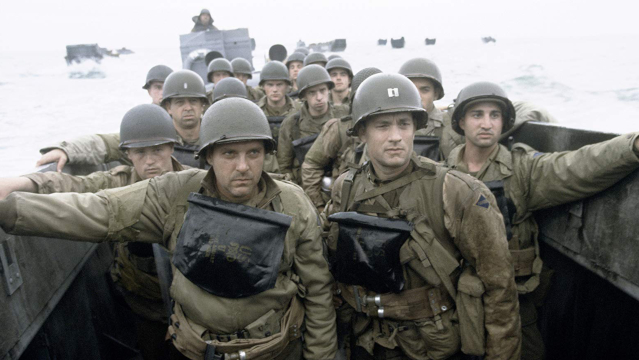
There are dozens, possibly hundreds of outstanding movies about World War II. It was a dramatic, brutal conflict and the Nazis were one of the most charismatically, disgustingly, evil villains in the history of the planet. That is why there have been so many films about WWII. The villain was clear and the mission was obvious.
When it comes to the European theater, there is no question that Saving Private Ryan is the most perfect representation of the American perspective of World War II. That opening sequence of the Invasion of Normandy is the most technically awesome feats ever put to film. Every single person who sat through this Spielberg film felt like they were with Tom Hanks on that beach. While the central conceit of the film is the find a single soldier, the film really is about the horrors and destruction WWII had all across Europe.
World War II (Pacific Theater)
Hacksaw Ridge (2016)
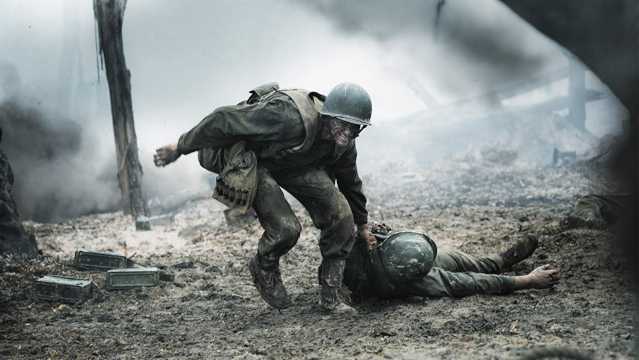
The pacific theater is often forgotten when discussing WWII and cinema. Nearly all the films focus on the European theater and the holocaust. In 2019, Roland Emmerich will be tackling the Battle of Midway in Midway. If Emmerich will do for Pacific WWII what he did for the Revolutionary War with The Patriot, we will be in for a treat.
However, Mel Gibson’s Hacksaw Ridge brilliantly gave us a taste of the Pacific theater and how it was equally has horrific as the European one. The film follows Desmond Doss, a Seventh-Day Adventist who entered the war as a medic, unable to touch a weapon. Gibson goes full Saving Private Ryan in portraying the mayhem and confusion. It works though because it is happening around the honorable, innocent, and vulnerable Doss. It is extravagant.
The Korean War
M*A*S*H* (1970)
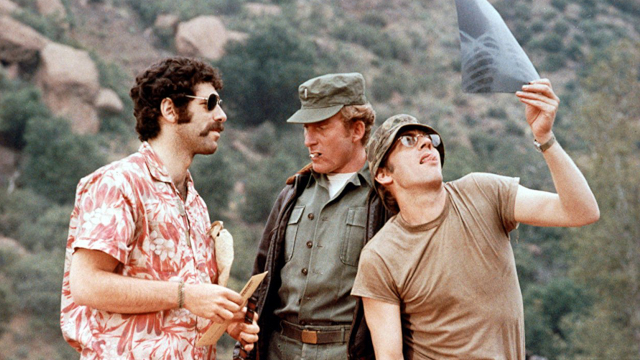
The Korean War is often referred to as the Forgotten War. Well, cinematically, that certainly is the case. This extraordinary military campaign took place right between WWII and the Vietnam War, both of which have vastly rich cinematic histories. However, the Korean War has only a few films to cinematically immortalize the conflict. The most significant is Robert Altman’s M*A*S*H*, which most people are familiar with only through it’s television adaptation.
M*A*S*H* is an ensemble comedy that takes place in a field hospital behind enemy lines during the Korean War. This movie perfectly exhibits how laughter is one of the only things that can keep you sane during the horrors of war. Altman so perfectly exhibits how the traumatic experiences of amputating soldiers limbs and patching up war wounds can weigh heavily on the psyche. The only way for the characters in M*A*S*H* to get through it all is to F**K with each other. It is a wonderful balance of drama and comedy, always the respectful and proper tone for all the laughter and all of the misery.
The Cold War
Dr. Strangelove (1964)
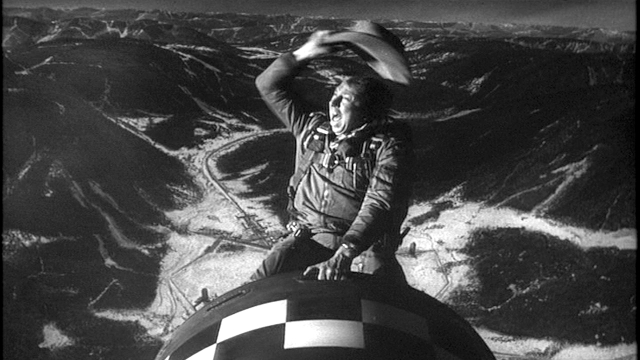
The Cold War, of course, was not a war in the traditional sense. It was a state of mind and an atmosphere of fear that took place between the United States and the Soviet Union. Most of the films that surround the Cold War involve McCarthyism (Trumbo), the threat of Nuclear War (The Hunt of Red October), or espionage (Bridge of Spies). However, one of the most brilliant films made about this paranoid era is Stanley Kubrick’s Dr. Strangelove.
There is nothing funny about nuclear holocaust. However, Kubrick found the gloriously absurd hilarity hidden underneath the bureaucracy, fear, and the idea a mutually assured destruction. At one point, you will be laughing hysterically at Peter Seller’s triple performance. At another, you will be horrified at the ease at which the destruction of civilization could be initiated. The Cold War was more of an idea then an actual specific engagement. Dr. Strangelove perfectly exhibited how crazy those ideas were.
The Vietnam War
Full Metal Jacket (1987)
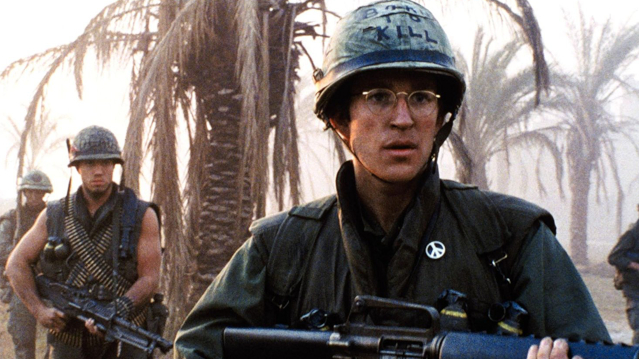
To choose the best Vietnam film is nearly impossible. Some of the greatest films ever made are about the Vietnam. Platoon could easily have been chosen. Apocalypse Now? Terence Malick’s The Thin Red Line? Either are worthy. However, the choice is Stanley Kubrick’s exercise in dehumanization, Full Metal Jacket.
This 1987 harrowing masterpiece is essentially two movies in one. First, the film shows how Marine recruits are torn down and built up into efficient killing machines in Marine basic training. It provided us with one of the greatest cinematic characters of all time with R. Lee Ermy’s Gunnery Sergeant Hartman. The way Hartman drives, molds, and insults his recruits is funny, exciting, and thoroughly disturbing. The man effectively turns class clowns, weaklings, and chubby losers into terrifying killing machines.
Then the film pivots and follows Matthew Modine’s private Joker to Vietnam. Joker is a reporter for Stars & Stripes, and his experiences in-country are totally Kubrickian. While most Vietnam movies focus on battle, camaraderie, and conflict (which FMJ certainly does as well), FML focuses more on the dehumanization and futility of war. This film isn’t about winning over the hearts and minds of the Vietnamese and saving them from the perils of Communism. This is about soldiers trying to find purpose and meaning in a conflict where those things are nearly impossible to find.
The Gulf War
Jarhead (2005)

The Gulf War was a unique one in the history of the United States. It was simple and straightforward, against an enemy of which the American military was far superior. In fact, the military might of the United States was so vastly beyond that of Iraq’s, many boots on the ground found the war boring and stoic. That is the basis for Sam Mendes vastly underrated Jarhead. Jake Gyllenhaal plays a sniper marine and Peter Sarsgaard his spotter. They are a two-man sharpshooter team that is obsolete in a military campaign that involves precision airstrikes.
The movie follows these soldiers that are bored and frustrated. Here they are, halfway around the world, in an oppressive desert, without much to do. The Marines get antsy and anxious for some sort of cathartic release that never comes. There is an incredibly powerful scene where Gyllenhaal and Sarsgaard have a combatant in their cross-hairs and all that pent of energy comes to a boil. It is pretty incredible. The Gulf War was a war where the US military just easily rolled over Saddam Hussein and his invading army. Most of the battle was fought through pressings of buttons, not by the men on the ground, and that is not easy for a Marine.
The War on Terror
The Hurt Locker (2008)
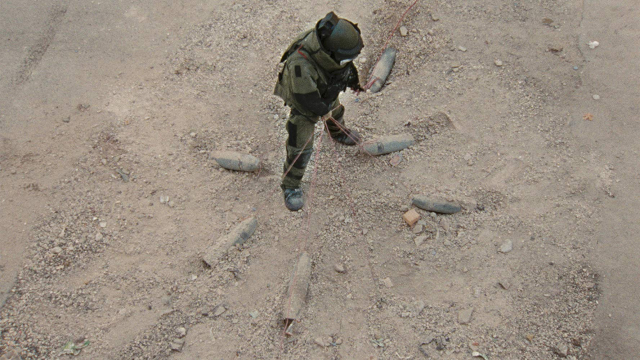
Just as the Gulf War was a unique war, the War on Terror is as well. Specifically, the War on Terror is not necessarily one that can be won. It is a perpetual state of the world where religious, idealistic, and geographical opinions are irreconcilable. Therefore, no amount of diplomacy or bullets seem able to make any headway. Often times, the military is not even sure who the specific enemy is. Furthermore, the rules and methods of warfare have completely changed.
This idea has not been better portrayed than in Kathryn Bigelow’s The Hurt Locker. Jeremy Renner plays a bomb-diffusing specialist. It has to be one of the most courageous, nerve-wracking jobs in all of the military. However, JR seems to take it in stride. It is what he is good at and diffusing IEDs is a necessary evil in the War on Terror. Insurgents use IEDs to ambush the American armed forces. Anything and everything can be a bomb. Bigelow so masterfully puts us right into the middle of the chaos and we feel the pressure and fear that these soldiers must feel every day.










